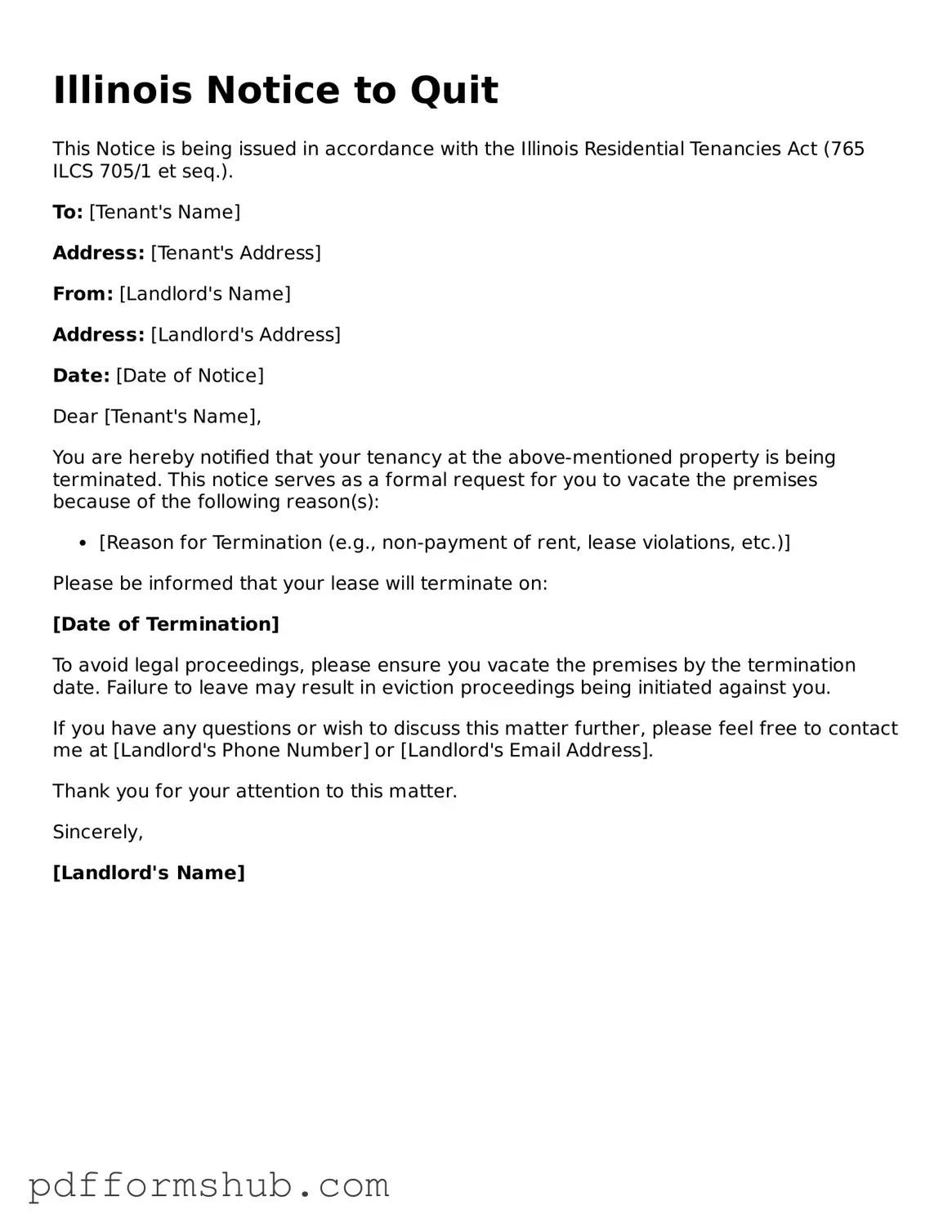Attorney-Verified Notice to Quit Form for Illinois State
The Illinois Notice to Quit form is a legal document that a landlord uses to inform a tenant of their need to vacate the rental property. This notice serves as the first step in the eviction process, outlining the reasons for termination and the timeframe in which the tenant must leave. Understanding this form is crucial for both landlords and tenants to ensure compliance with Illinois law.
Ready to fill out the form? Click the button below!
Customize Form
